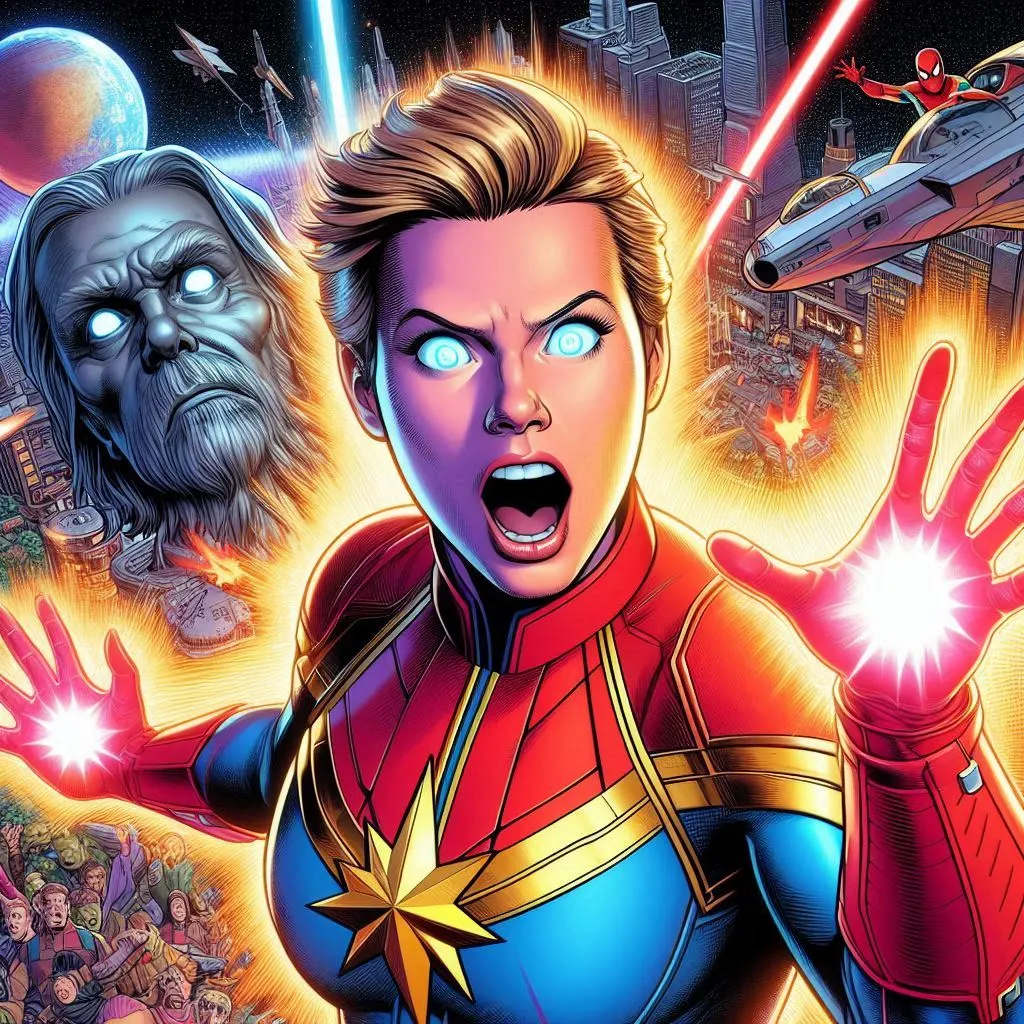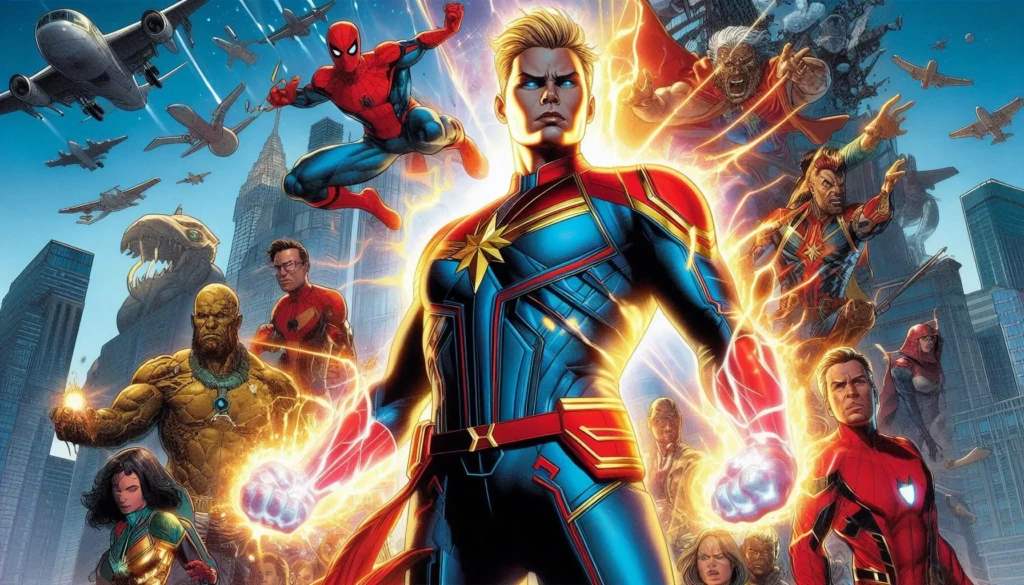There’s more than one Captain Marvel — and that fact alone has sparked debates, rewrites, and reboots for decades. From a pink-skinned Kree soldier to a fierce Air Force pilot-turned-galactic protector, the mantle of “Captain Marvel” carries a tangled legacy that many fans still don’t fully understand. Whether you’re a die-hard comic collector or just getting into the MCU’s Phase 5, there’s a lot to unpack here. That’s exactly why you should subscribe to marvelphase5 — your go-to source for decoding the Marvel multiverse, one explosive reveal at a time.
In this article, we’re cutting through the noise and giving you the real story of Captain Marvel — from Mar-Vell’s cold war origins to Carol Danvers’ explosive rise as one of Marvel’s most powerful (and divisive) heroes. We’ll also explore the shifting gender dynamics, forgotten story arcs, and how Marvel’s editorial decisions reshaped the franchise. Whether you stan Carol, miss Mar-Vell, or want Genis-Vell to finally get his due — we’ve got receipts.
The Twisted Legacy of Captain Marvel: From Mar-Vell to Danvers
Captain Marvel isn’t just a title — it’s a mirror reflecting Marvel’s evolving identity. First conceived in 1967’s Marvel Super-Heroes #12, Mar-Vell was a male Kree soldier, stationed on Earth to spy on humanity. But his conscience got in the way. Instead of fulfilling his mission, he chose Earth over the Kree Empire — eventually sacrificing himself for the greater good. His tragic arc ended in The Death of Captain Marvel (1982), a milestone graphic novel that gave the character an almost mythic closure.
Enter: Carol Danvers. Introduced in 1968 (Marvel Super-Heroes #13), Carol was initially a military officer and later became Ms. Marvel in 1977 after a Kree device fused her DNA with Mar-Vell’s. But it wasn’t until 2012 — decades later — that she finally took on the mantle of Captain Marvel, in a game-changing run by writer Kelly Sue DeConnick and artist Dexter Soy. This wasn’t just a rebrand; it was a seismic narrative shift.
Carol was now front and center, rocking a new suit designed by Jamie McKelvie — military-chic with a cosmic flair — and leading Marvel’s charge toward greater gender inclusivity. But it didn’t come without backlash.
📈 Fun Fact: The term “Captain Marvel” has been used by at least 9 different characters in Marvel Comics canon.
Let’s unpack how we got here — and why it still matters today.
Who Was the Original Captain Marvel?
Mar-Vell. A soldier, a defector, a martyr.
Created by Stan Lee and Gene Colan, Mar-Vell was the original bearer of the title “Captain Marvel” in Marvel Comics. Unlike many heroes of the time, Mar-Vell’s journey wasn’t driven by personal tragedy or revenge — it was driven by duty and transformation. He changed because he observed Earth’s people, and their humanity moved him.
He wasn’t flashy. He wasn’t funny. He wasn’t even popular. But his death — from cancer, not battle — set a new standard in superhero storytelling.
Mar-Vell died in 1982’s The Death of Captain Marvel, written by Jim Starlin. No resurrection. No time-travel saves. Just quiet, painful dignity.
So when fans ask, “Why did they make Captain Marvel a woman?” — the answer isn’t a retcon. It’s succession.

How Did Carol Danvers Become Captain Marvel?
The evolution of Carol Danvers is a slow burn, not a reboot.
A former Air Force pilot and NASA security chief, Carol was first empowered by an exploding Kree device, merging her genetic structure with alien DNA. Her identity crisis as Ms. Marvel was emblematic of 1970s feminism — strong, flawed, still written mostly by men.
It wasn’t until 2012’s Captain Marvel Vol. 7 that she stepped into the spotlight — literally rebranded with a sleek suit, short hair, and leadership chops. Kelly Sue DeConnick’s run reframed Carol not just as a warrior, but as a role model — flawed, ambitious, and unapologetically commanding.
“Captain Marvel is not here to be liked. She’s here to lead.” – Kelly Sue DeConnick, 2014 interview
Her rise coincided with Marvel Studios’ plans for the MCU, culminating in Brie Larson’s portrayal in 2019’s Captain Marvel. The synergy between comic canon and cinematic rollout wasn’t accidental — it was strategic.
Why Is the Captain Marvel Title So Controversial?
It’s not just about gender — it’s about identity, nostalgia, and canon.
Mar-Vell fans argue that his legacy was discarded too quickly. Some even see Carol’s ascension as forced brand engineering. Meanwhile, Carol stans see her rise as long-overdue progress and a necessary course correction.
Marvel’s editorial history reveals a key insight: the Captain Marvel mantle has always been a narrative wildcard. Between Monica Rambeau (the first Black woman to use the name), Genis-Vell (Mar-Vell’s son), and Phyla-Vell (his daughter), the title has never stuck with just one person for long.
Marvel even lost the copyright to the name “Captain Marvel” in the 1950s to DC Comics — resulting in the Shazam confusion we see today.
It’s not just about the suit — it’s about what the suit means.

What Are the Must-Read Captain Marvel Comics?
Here’s a breakdown of the essential reads for each major Captain Marvel:
| Character | Essential Reads |
|---|---|
| Mar-Vell | Marvel Super-Heroes #12–13, Captain Marvel (1968–1979), The Death of Captain Marvel |
| Carol Danvers | Ms. Marvel (1977), Avengers Annual #10, Captain Marvel (2012–2017) by DeConnick, Captain Marvel (2019–2023) by Kelly Thompson |
| Monica Rambeau | The Amazing Spider-Man Annual #16, Avengers (1980s), Nextwave |
| Genis-Vell | Captain Marvel (1999–2004) by Peter David |
These arcs not only define the character but show how Marvel used the title as a cultural reset button. Each era’s Captain Marvel reflects its time: Cold War, Second-Wave Feminism, post-9/11 militarism, and Millennial identity crises.
Is Carol Danvers the Definitive Captain Marvel?
That depends on who you ask.
For MCU audiences, she is. Carol is the most promoted, most merchandised, and most powerful iteration. She’s tied to the cosmic side of Marvel and deeply integrated into the Multiverse Saga going forward.
For comic purists, the jury’s still out. Some prefer Mar-Vell’s tragic nobility. Others long for Monica’s underused leadership potential. Genis-Vell has cult status but little mainstream reach.
Carol isn’t universally beloved — but she’s undeniably central.
As of 2025, Carol Danvers has headlined over 150 solo issues — more than any other Captain Marvel in Marvel history.
Final Thoughts
The Captain Marvel legacy is a prism — what you see depends on where you stand. From a Cold War alien spy to a feminist icon, the name has traveled across eras, identities, and ideologies. Marvel didn’t just change the gender of a hero — they redefined what heroism means in each generation.
So whether you’re #TeamMarVell or #CarolCorps, it’s clear that the Captain Marvel brand is not static. It’s living, evolving, and often… divisive.
And that’s exactly why it’s powerful.
Don’t forget to subscribe to marvelphase5 to stay ahead of the curve with more deep dives into the MCU’s shifting legacy, comic lore revelations, and controversial fan debates.



